
views
- Rice does not turn into maggots! Insects lay their eggs on rice grains, and the eggs hatch into larvae (known as maggots).
- Maggots are usually hidden inside the rice grains. If you suspect your rice is contaminated, place the bag in the freezer for 4 days to kill any eggs or larvae.
- It’s safe to eat maggots in rice, as long as the rice is properly cooked.
Does rice turn into maggots?
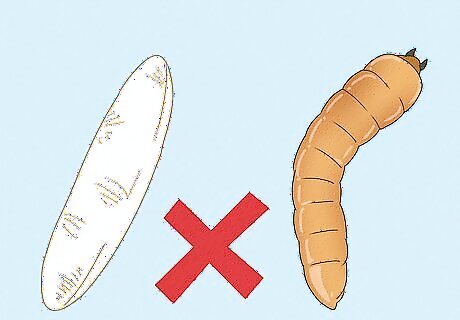
Rice does not transform into maggots. Rice is a grain, so it cannot turn into a live insect. However, rice is an ideal breeding ground for insects. Insects lay their eggs on rice grains. Once the eggs hatch into larvae (known as maggots), the larvae have an instant food source, they reproduce, and the cycle repeats. Most “maggots” found in rice aren’t actually maggots! True maggots come from fly eggs, but the most common pantry pest is the Indian meal moth. Since both insects have similar-looking larvae, Indian meal moth larvae are still referred to as maggots. Indian meal moth eggs hatch into small white caterpillars about .5 inches (1.3 cm) long. Fully-grown larvae can also have a green or pinkish hue.
Ways Maggots Get Into Rice

Insect eggs hide inside grains when the rice is processed. It’s impossible to grow and process food that’s 100% pest-free. When rice is processed, insect eggs hide in the grains. These eggs are nearly impossible to detect, so most maggots come directly from the manufacturer. Depending on when the eggs were laid, you may purchase rice that already contains visible maggot larvae, or the eggs will hatch a few weeks later (if you store your rice at room temperature). Inspect rice packaging at the supermarket to avoid purchasing potentially infested rice. If there are any holes or tears in the packaging, choose another bag of rice!

Improper storage allows insects to lay eggs on your rice. Maggot infestation easily occurs from improper rice storage. It’s important to store your rice in an airtight container, preventing insects from laying their eggs in the first place. Avoid storing your rice in thin plastic bags or cardboard–maggots can chew through these materials! Keep all your pantry items, including rice, in a tightly-sealed container made out of metal, glass, or thick plastic.
Is it safe to eat rice with maggots?
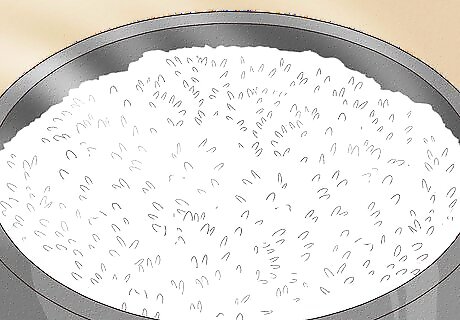
With proper cooking, you can eat rice that contains maggot eggs/larvae. In some parts of the world, maggot larvae are considered a delicacy (and a good source of protein). Maggots pose a greater health risk when they’re found in fresh or pre-cooked foods. Since rice grains are boiled before consumption, the hot water kills the insect eggs/larvae. Just be sure to cook your rice for at least 5 minutes! There’s a slim possibility that larvae can cause myiasis, a condition where surviving larvae enter the stomach and/or intestines. It’s typically not life-threatening, but it can cause vomiting, nausea, or stomach pains. If your (dry) rice contains maggots, you don’t have to throw it out! Check the expiration date on the rice packaging to ensure it’s still fresh–spoiled food leads to food poisoning, rather than maggots.
Getting Rid of Maggots in Rice
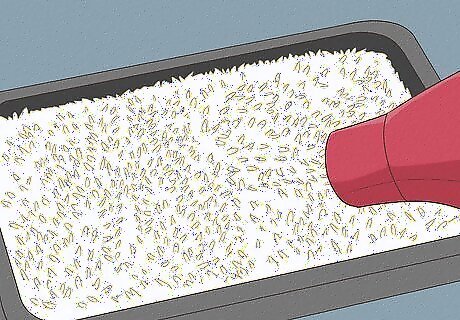
Spread the rice evenly on a sheet tray and heat it with a hair dryer. Make sure the sheet tray is large enough so there is only one flat layer of rice. On high-heat, run a hair dryer over your rice (2-3 times) to thoroughly heat the grains. Concentrate on spots that show discoloration or movement. If you don’t have a hair dryer, pour boiling water over the rice to kill the maggots and wait 5 minutes. Maggots cannot survive extreme temperatures, so you can cook the rice after draining the water.

Pour the heated rice in a large bowl and cover it with hot water. Dump the rice from the sheet into a bowl and let it rest for 5 minutes. Add the boiling water and wait a few minutes for the maggot larvae to rise to the surface of the water. Use a small cup to scoop them out and immediately cook the soaked rice to avoid bacterial growth.
How to Prevent Maggots in Rice
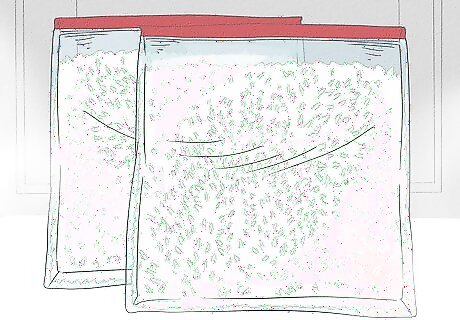
Place rice in the freezer for 4 days to kill any maggot eggs or larvae. Make sure you freeze your rice grains at a temperature of 0℃. If you buy a bulk bag of rice, divide it into smaller bags before freezing to ensure enough cold air movement reaches all of the grains.
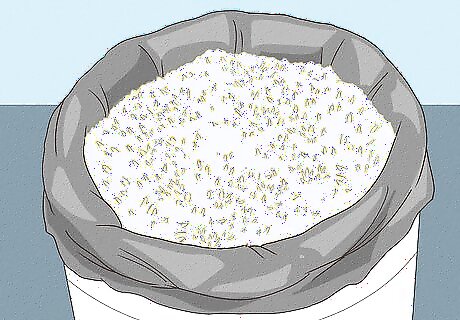
Store rice in an airtight container made of glass, metal, or thick plastic. For long-term storage, pour your rice in a food-grade container that has been lined with a Mylar bag. The best temperature to store rice is 40℉ or below, but properly-stored rice can last up to 10 years at a constant temperature of 70℉.
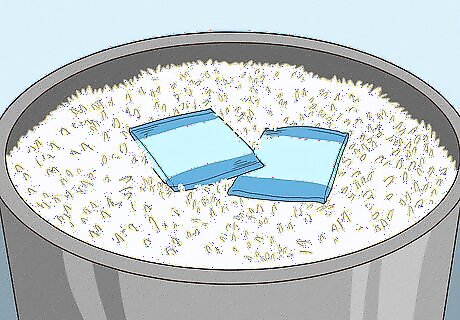
Add food-safe oxygen absorbers in your rice bag to kill maggot eggs. Oxygen absorbers are small square packets commonly found in snacks like beef jerky. They preserve the shelf life of food by removing oxygen inside their packaging, but they’re also perfect to prevent insect eggs from hatching! Oxygen absorbers are usually labeled with “do not eat” or “do not microwave” so make sure to remove them before cooking your rice.




















Comments
0 comment